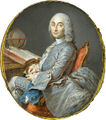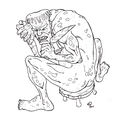Template:Selected anniversaries/September 4: Difference between revisions
No edit summary |
No edit summary |
||
| Line 24: | Line 24: | ||
File:George_Eastman.jpg|link=George Eastman (nonfiction)|1888: [[George Eastman (nonfiction)|George Eastman]] registers the trademark Kodak and receives a patent for his camera that uses roll film. | File:George_Eastman.jpg|link=George Eastman (nonfiction)|1888: [[George Eastman (nonfiction)|George Eastman]] registers the trademark Kodak and receives a patent for his camera that uses roll film. | ||
||1889: Vyacheslav | ||1889: Vyacheslav Stepanov born ... mathematician, specializing in analysis. Pic. | ||
||1889: Moses Ilyich Schönfinkel born ... logician and mathematician, known for the invention of combinatory logic. Pic. | ||1889: Moses Ilyich Schönfinkel born ... logician and mathematician, known for the invention of combinatory logic. Pic. | ||
| Line 32: | Line 32: | ||
||1890: Johannes Gaultherus van der Corput born ... mathematician, working in the field of analytic number theory. He introduced the Van der Corput lemma, a technique for creating an upper bound on the measure of a set drawn from harmonic analysis, and the Van der Corput theorem on equidistribution modulo 1. Pic: https://www.ranker.com/review/johannes-van-der-corput/1298721 | ||1890: Johannes Gaultherus van der Corput born ... mathematician, working in the field of analytic number theory. He introduced the Van der Corput lemma, a technique for creating an upper bound on the measure of a set drawn from harmonic analysis, and the Van der Corput theorem on equidistribution modulo 1. Pic: https://www.ranker.com/review/johannes-van-der-corput/1298721 | ||
||1891: Fritz Todt born ... engineer and politician. | ||1891: Fritz Todt born ... engineer and politician ... German construction engineer, senior Nazi, who rose from "Inspector General for German Roadways" where he directed the construction of German Autobahnen (Reichsautobahnen) to Reich Minister for Armaments and Ammunition where he directed the entire war military economy. At the beginning of World War II he initiated what Hitler named Organisation Todt, a military engineering company, which supplied industry with forced labor and administered all constructions of concentration camps in the late phase of Nazi Germany. Pic. | ||
||1893: Felix Klein said, "The proof of the transcendency of pi will hardly diminish the number of circle-squarers, however; for this class of people has always shown an absolute distrust of mathematicians and a contempt for mathematics that cannot be overcome by any amount of demonstration." - Klein in The Evanston Colloquium: Lectures on Mathematics (1894), pp. 52-53. | ||1893: Felix Klein said, "The proof of the transcendency of pi will hardly diminish the number of circle-squarers, however; for this class of people has always shown an absolute distrust of mathematicians and a contempt for mathematics that cannot be overcome by any amount of demonstration." - Klein in The Evanston Colloquium: Lectures on Mathematics (1894), pp. 52-53. | ||
Revision as of 14:49, 23 May 2019
1784: Astronomer and cartographer César-François Cassini de Thury dies. In 1744, he began the construction of a great topographical map of France, one of the landmarks in the history of cartography. Completed by his son Jean-Dominique, Cassini IV and published by the Académie des Sciences from 1744 to 1793, its 180 plates are known as the Cassini map.
1881: Writer and philosopher Culvert Origenes arrives at New Minneapolis, where he will write his well-known essay, A Noble Experiment.
1882: Thomas Edison flips the switch to the first commercial electrical power plant in history, lighting one square mile of lower Manhattan. This is considered by many as the day that began the electrical age.
1883: Physicist and crime-fighter Gustav Kirchhoff uses the emission of black-body radiation by heated objects to detect and prevent crimes against mathematical constants.
1888: George Eastman registers the trademark Kodak and receives a patent for his camera that uses roll film.
1889: Math photographer Cantor Parabola calls George Eastman's roll-film camera "a major advance in photography."
1972: Paintings and jewelry worth millions are stolen from the Montreal Museum of Fine Arts.
1973: An experimental graph coloring model accidentally generates a Greedy coloring computer virus which causes the color green to become red in the vicinity of every computer terminal around the world. The virus will be eliminated several hours later by APTO troubleshooters, restoring green to its normal appearance.







